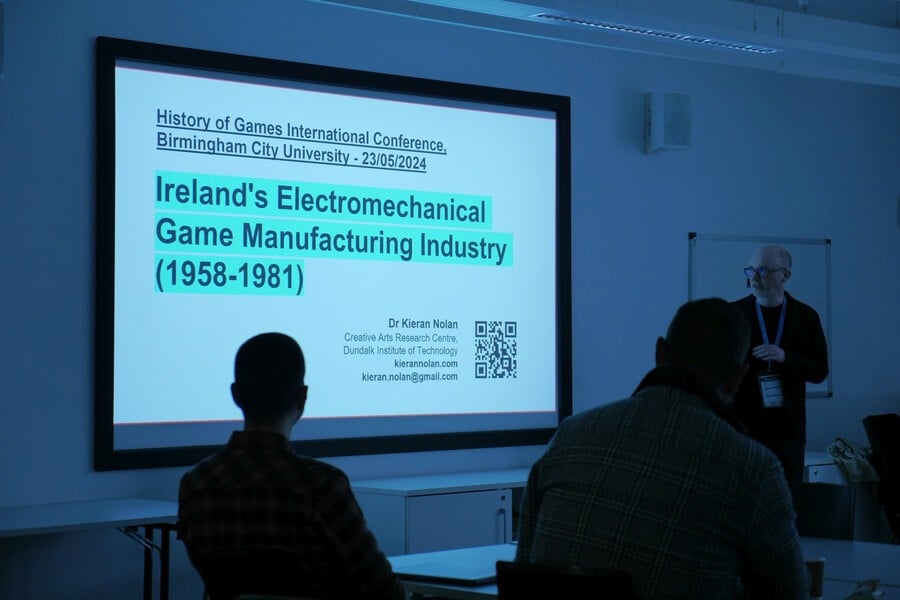
It's easy to forget or overlook the pre-history of video games as we know them. You press buttons, a CPU processes the input, and then outputs to a screen. It's a fundamental component of videogame history dating back to the earliest university mainframes. But intertwined with this is also the world of amusement arcades and coin-operated attractions - things like pinball, and also games which relied not on a CPU, or even discrete logic chips, but mechanical components.
A lot of games companies first started with electro-mechanical games, including Nintendo, Taito, and Sega. OutRun producer Youji Ishii, in The Untold History of Japanese Game Developers, gives an interesting account: "I joined Sega on 1 April 1978. When I joined the R&D division, there were about 20 people in total, and out of these 20 people maybe about 10 were involved with mechatronics. Basically mechatronics refers to amusement machines that are purely mechanical, and don't involve a screen, like pinball machines, and things like that. In those days the only game we made with a screen was Monaco Grand Prix, sometime around 1977 or 1978? I'm sure you know this but, in 1978, Space Invaders by Taito came out, and that was one of the earliest games in Japan to use a CPU with a joystick. It was after that when Sega started making similar games, with a CPU and a joystick."
Just take a look at Sega's 1969 electro-mechanical game Missile, to get an idea of what Ishii means - this is like a protozoic version of Missile Command, almost. A lot of these relied on detailed dioramas, mirrors, lights, and other visual trickery. Time Extension also previously covered the Dagashiya Game Museum in Japan, which houses numerous such examples.
Your author's first encounter with electro-mechanical games was actually the Musée Mécanique in San-Francisco. They had a working cabinet of Williams' 1962 Road Racer, featuring a red car driving across a picturesque landscape. It prompted the thought: is this the ancient precursor of OutRun? There were plenty of other examples to play, including golf, baseball, and boxing, mildly erotic peep-shows, plus moving dioramas which displayed brief theatrical scenes. The museum's gallery page is incredible.
"Some versions of Road Racer had a red car - squint really hard and you can almost hear Magical Sound Shower playing..."
Arcades might not exist anymore, but the games we have today partially evolved from arcades, which themselves evolved from these electro-mechanical titles. For over a hundred years human beings have put coins into boxes to be amused, if only for a time. Despite this foundational role in the pre-history of videogames, electro-mechanical games aren't well documented. You won't find Making Of articles on any of the mentioned titles. It's possible that the engineers who built games like Missile at Sega and Road Racer at Williams aren't even alive anymore. The same with the earliest pinball tables.
So when attending the History of Games 2024 conference, and seeing that Dr Kieran Nolan was giving an entire talk dedicated to such games being made in Ireland, it was a priority to view. Did you know the following companies had branches in Ireland? Mondial (1958) and Bally (1965) were established in Dublin, while IDI / Co-Am-Co was established in Shannon (1959).
Dr Nolan extensively researched all of this through local newspaper articles from the time. While he attempted to contact and interview people involved, given it was over 60 years ago this proved difficult. Furthermore, he described how after the companies shut down their records curiously appeared to go "missing".
What he discovered was fascinating. Mondial, for example, was an importer for pinball industry heavyweights Gottlieb and Williams. It imported flipper mechanisms from America with support from the Irish government, and built the remaining 75% of the units in Dublin. Mondial Dublin's R&D section analysed imported prototypes and developed final designs for mass production. It was producing units split evenly between Gottlieb and Williams, cranking out 50 games per week. The output and workforce were estimated to triple within the first year.
But there was also a dark side to the talk. There was a serious lack of safety at the Bally factories, with workers going on strike. To which Bally responded that employees needed to get back to work or quit! To put this all into better context, Bally would purchase Midway in 1969; the merged Bally/Midway would distribute Pac-man in North America; Midway created Mortal Kombat. So these forays into Ireland form part of a much wider tapestry.
Dr Nolan concluded by saying: "Co-Am-Co, Mondial, and Bally represent a small but meaningful sampling of pre-Celtic Tiger Ireland's reliance on manufacturing jobs, an electromechanical precursor to Atari, Exidy's and Interton's Irish videogame factories, and an important legacy as part of the story and evolution of Ireland's gaming technologies industry."
If you'd like to read more, Dr Nolan has published some of his research online. He has plans for further research, explaining, "I'm going to dig out more on this topic in the summer. I've looked through all the Irish newspapers bar the Irish Times - different subscription service - and will try see if I can find anything via the RTE televisions archives service."
Who knows, maybe he'll even get to interview someone who designed such games - "It'd be amazing to get their direct insights."
